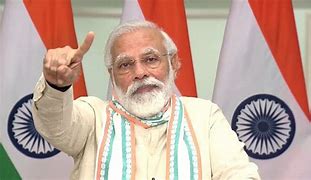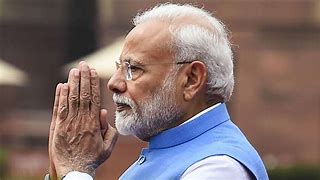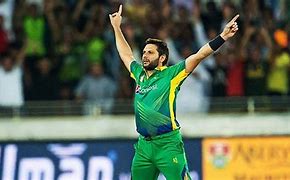Feature
21st century belongs to India, says Modi as he wows Indian community

San Jose: Prime Minister Narendra Modi said the 21st century belongs to India and the world has begun to acknowledge the fact, as he addressed an 18,000-strong cheering crowd of Indian community members at the SAP Centre here.
Modi, in an over hour-long address to a “Modi, Modi” chanting crowd, also said that terrorism and climate change are the main challenges facing the world and urged all nations to unite in facing the twin threats.
In a rock star reception like the one he had received at Madison Square Garden last year, Modi also asked the crowd for a “certificate” of his performance in the 16 months he has been in power.
He said the world now acknowledges that the 21st century belongs to India, to loud cheers.
“Sometime ago India was striving to join with the world, but today the times have changed and the world is thirsting to join with India,” he said.
He also said he will give his every moment and every particle of his body in working for India’s betterment.
Asking the crowd for a certificate of his 16 months in power, Modi asked the rapturous crowd: “Did I live up to my promises, working day and night, and the responsibility that I have undertaken…Have I lived up to that?” to loud cheers and chants of “Modi, Modi”.
Modi, who said he was visiting the West Coast after 25 years, said he was seeing a “vibrant picture” of India in the large Indian tech community that lives and works here.
Modi praised the “nimble fingers” of the Indian tech experts who “have made the world acknowledge India” with their competence, innovations.
He said he did not see the large numbers of Indians working in the US and other foreign countries as a brain drain, but as a “brain deposit”.
Modi called terrorism and global warming as world’s main challenges and asked all nations to unite to fight this scourge as there was no such thing as good or bad terrorism.
“The world has to realise that terrorism can hit anyone at anyplace, and it is the world’s responsibility to recognize it and unite against terrorism,” he said.
Hoping that in its 70th anniversary year, the United Nations would be able to define terrorism, Modi said: “We cannot safeguard humanity if we do not come to an agreement on what constitutes terrorism.”
“Terrorism is terrorism, there can be no differentiation between good and bad terror,” he said.
Modi said he has written to the countries that the UN should decide on what constitutes terrorism, and who are the outfits perpetrating terror, and which are the countries supporting terror and those who are for humanity.
Mod also said he was trying to include space technology in the work of the government, and that after his persuasion 170 government departments are using space technology for connectivity and for providing easier governance.
He also outlined his government’s JAM initiative – J for Jan Dhan financial inclusion programme, A for Aadhar unique identity card and M for Mobile governance. He said the linking of the three would help eradicate corruption in the system.
He criticized the previous governments for not having opened up the banking sector to the poor despite nationalizing the banks around 40 years ago. “I am sad to say that despite the nationalization half the people of the country had never seen the doors of a bank,” he said, adding that without financial inclusion a country cannot progress.
In a dig at the previous Congress-led governments, he said that after coming to power he directed his officials to take the banks to the poorest sections of the people. “I said that we have made merry for 40 years, now it is time to work.”
He said the Jan Dhan Yojana had resulted in Rs.32,000 crore being put in the banks by the poor and rural populace.
He said linking the Aadhar card, with its biometric identification, with the Jan Dhan account in the case of gas cylinder subsidy had helped eliminate corruption in the scheme.
“The JAM yojana will help to root out corruption,” he said.
He also touched on skill development, Beti Bacho, Beti Padhao, and the soil health card, and neem coating for urea to help farmers.
Modi announced a thrice weekly Air India flight from New Delhi to San Francisco from December 2.
Modi also paid tribute to freedom fighter Bhagat Singh on his birth anniversary and asked the crowd to join in.
Linking with the diaspora comprises an important facet of Modi’s foreign visits.
Entertainment
Meghalaya Reserves Legalized Gambling and Sports Betting for Tourists

The State Scores Extra High on Gaming-Friendly Industry Index
Meghalaya scored 92.85 out of 100 possible points in a Gaming Industry Index and proved to be India’s most gaming-friendly state following its recent profound legislation changes over the field allowing land-based and online gaming, including games of chance, under a licensing regime.
The index by the UK India Business Council (UKIBC) uses a scale of 0 to 100 to measure the level of legalisation on gambling and betting achieved by a state based on the scores over a set of seven different games – lottery, horse racing, betting on sports, poker, rummy, casino and fantasy sports
Starting from February last year, Meghalaya became the third state in India’s northeast to legalise gambling and betting after Sikkim and Nagaland. After consultations with the UKIBC, the state proceeded with the adoption of the Meghalaya Regulation of Gaming Act, 2021 and the nullification of the Meghalaya Prevention of Gambling Act, 1970. Subsequently in December, the Meghalaya Regulation of Gaming Rules, 2021 were notified and came into force.
All for the Tourists
The move to legalise and license various forms of offline and online betting and gambling in Meghalaya is aimed at boosting tourism and creating jobs, and altogether raising taxation revenues for the northeastern state. At the same time, the opportunities to bet and gamble legally will be reserved only for tourists and visitors.
“We came out with a Gaming Act and subsequently framed the Regulation of Gaming Rules, 2021. The government will accordingly issue licenses to operate games of skill and chance, both online and offline,” said James P. K. Sangma, Meghalaya State Law and Taxation Minister speaking in the capital city of Shillong. “But the legalized gambling and gaming will only be for tourists and not residents of Meghalaya,” he continued.
To be allowed to play, tourists and people visiting the state for work or business purposes will have to prove their non-resident status by presenting appropriate documents, in a process similar to a bank KYC (Know Your Customer) procedure.
Meghalaya Reaches Out to a Vast Market
With 140 millions of people in India estimated to bet regularly on sports, and a total of 370 million desi bettors around prominent sporting events, as per data from one of the latest reports by Esse N Videri, Meghalaya is set to reach out and take a piece of a vast market.
Estimates on the financial value of India’s sports betting market, combined across all types of offline channels and online sports and cricket predictions and betting platforms, speak about amounts between $130 and $150 billion (roughly between ₹9.7 and ₹11.5 lakh crore).
Andhra Pradesh, Telangana and Delhi are shown to deliver the highest number of bettors and Meghalaya can count on substantial tourists flow from their betting circles. The sports betting communities of Karnataka, Maharashtra, Uttar Pradesh and Haryana are also not to be underestimated.
Among the sports, cricket is most popular, registering 68 percent of the total bet count analyzed by Esse N Videri. Football takes second position with 11 percent of the bets, followed by betting on FIFA at 7 percent and on eCricket at 5 percent. The last position in the Top 5 of popular sports for betting in India is taken by tennis with 3 percent of the bet count.
Local Citizens will Still have Their Teer Betting
Meghalaya residents will still be permitted to participate in teer betting over arrow-shooting results. Teer is a traditional method of gambling, somewhat similar to a lottery draw, and held under the rules of the Meghalaya Regulation of the Game of Arrow Shooting and the Sale of Teer Tickets Act, 2018.
Teer includes bettors wagering on the number of arrows that reach the target which is placed about 50 meters away from a team of 20 archers positioned in a semicircle.
The archers shoot volleys of arrows at the target for ten minutes, and players place their bets choosing a number between 0 and 99 trying to guess the last two digits of the number of arrows that successfully pierce the target.
If, for example, the number of hits is 256, anyone who has bet on 56 wins an amount eight times bigger than their wager.























